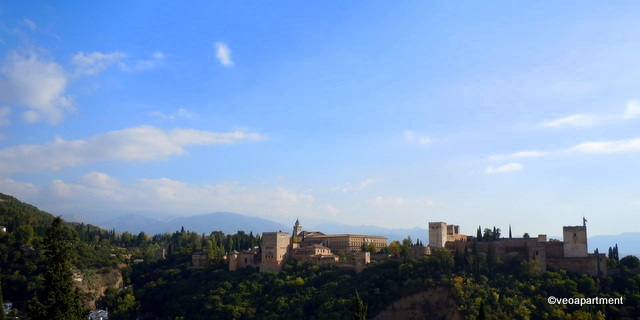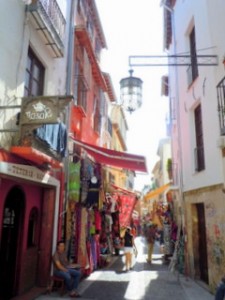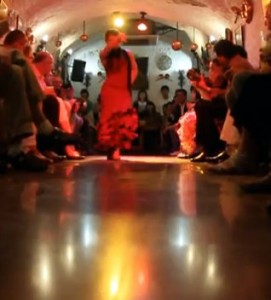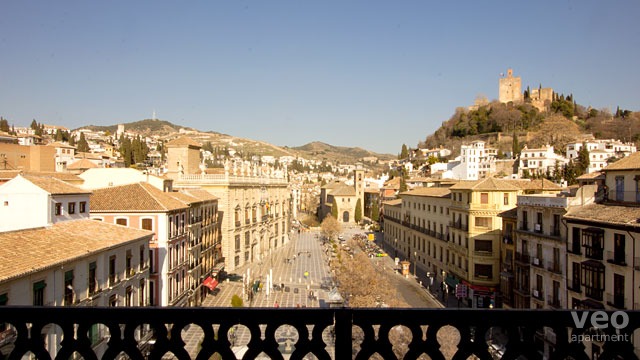To the south and southeast of the Alhambra Palace, on the slope of the hill dropping down to the River Genil, is the district of El Realejo, one of Granada’s most important historic neighbourhoods. In mediaeval times, until the conquest of the city by the Christians, it was the Jewish quarter of the city, and was known as “Granada of the Jews”. Originally this was outside the city walls, and reached by passing through the Torres Bermejas, an impressive group of towers that protected one of the gates of the Moorish period. After the expulsion of the Jews and Moslems it was given the name El Realejo, the Royal quarter, and although it still retains much of its original street layout, its character owes much to later rebuilding of the city.
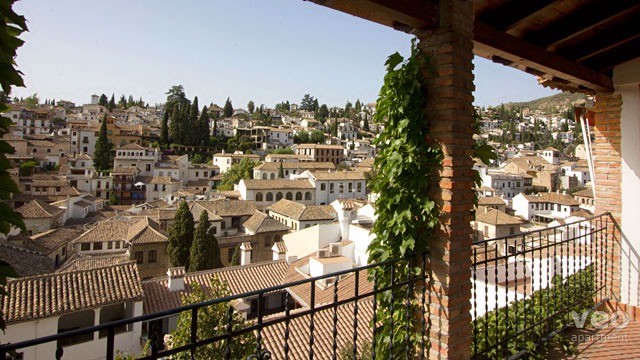
View from the Almanzor Alta Carmen terrace overlooking the Realejo.
From the Plaza Nueva a walk up the steep street of Cuesta Gomérez takes you through the Puertas de las Granadas towards the palace and the upper Realejo, but its worthwhile to make a short detour up Almanzor Alta street, and with the walls of the fortress looming above you take in the views of the Albaicin and the city centre.
From there walk past the Torres Bermejas into the Realejo proper. It’s an area of picturesque narrow streets and lots of busy bars and restaurants, especially around the Campo del Principe (Field of the Prince), the main square in the centre of the neighbourhood. It is said to have come by its name because a prince died there after falling off his horse. Stop here for a drink or a bite to eat while you absorb the atmosphere.
A little further on is one of Granada’s gems, the Carmen of the Martyrs. This was the site of the first Christian hermitage in Granada, named in commemoration of the Christians who had languished or perished in Moorish jails. In the 19th century it was rebuilt as a small palace, and surrounded with gardens in various styles and a small lake. It’s a place to visit for its tranquil beauty and views of the Alhambra.
Make your way back to the city centre along the main street, the Calle de Santiago (which becomes calle Pavaneras in its lower part), which will take you past many of the grandest buildings in the neighbourhood, including a number of religious foundations, such as the Convents of Santiago and the Carmelitas, and palaces like the Casa de los Tiros, or the Casa Arabe Girones, which is unusual in preserving a Moorish house in its interior, and is worth visiting for that alone.
For a perfect base for visiting this and other parts of Granada, have a look at our apartments in Almanzor Alta and Cuesta Gomérez.
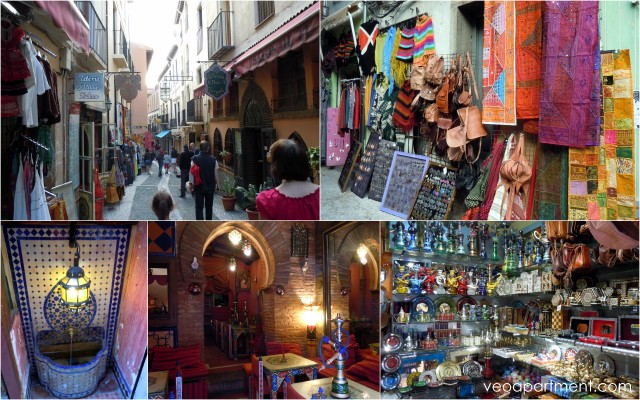
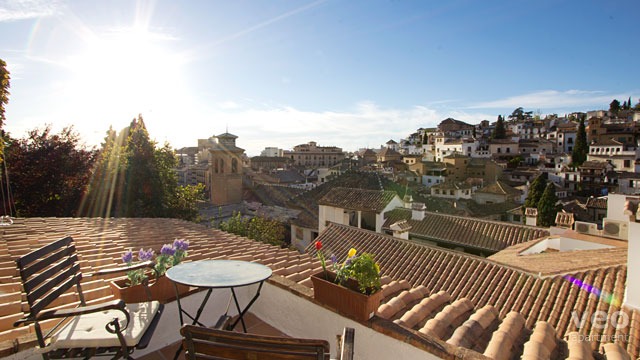 view from our
view from our 